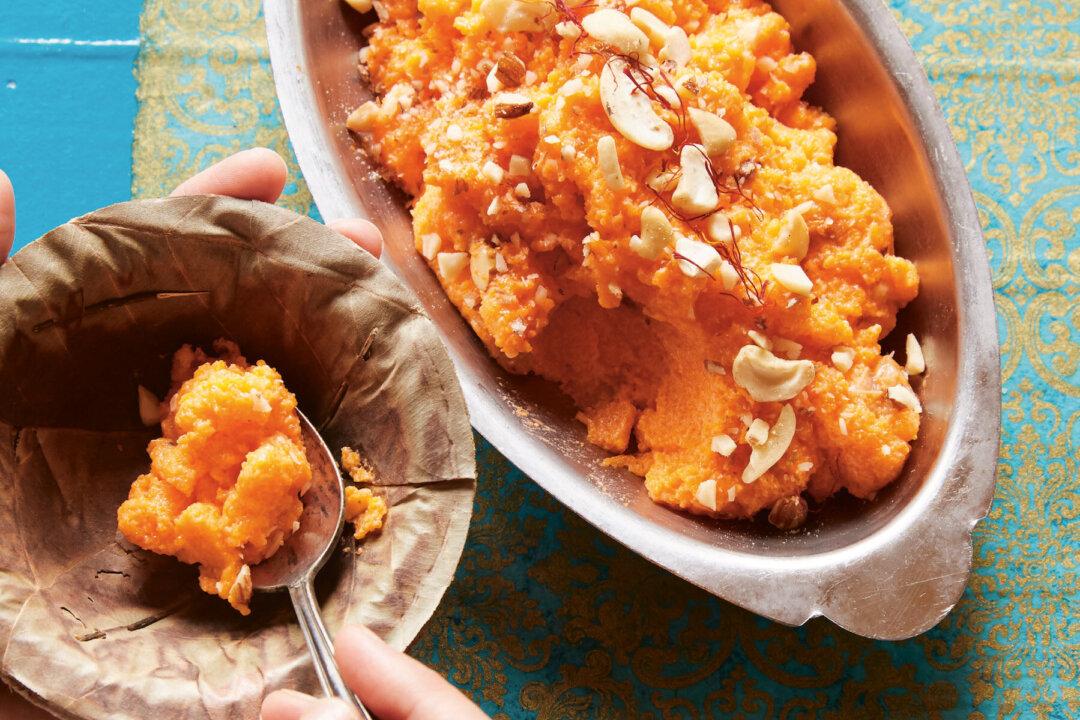For Maneet Chauhan, the India-born, Nashville-based James Beard Award-winning chef, restaurateur, and TV personality, winter weather calls for her family recipe for gajar ka halwa, a sweet and creamy carrot pudding served warm. The traditional Indian dessert is often served at temple festivals and during Diwali, the five-day festival of lights. This year, the main day of the festival falls on Nov. 4.
This velvety carrot pudding, thickened with sweetened condensed milk and paneer, an Indian cow’s milk cheese similar to farmer cheese, is subtly spiced with cardamom and garnished with pistachios. It’s a wintertime comfort food in Punjab, where frigid temperatures are no match for this warm dessert that is traditionally made from red Punjabi carrots, which are only available in the winter.

